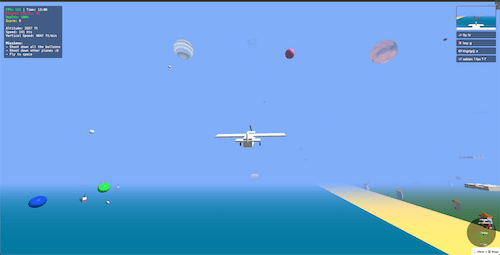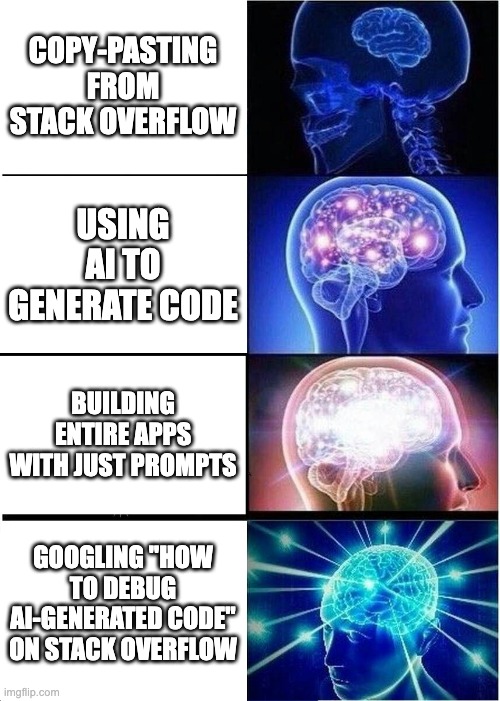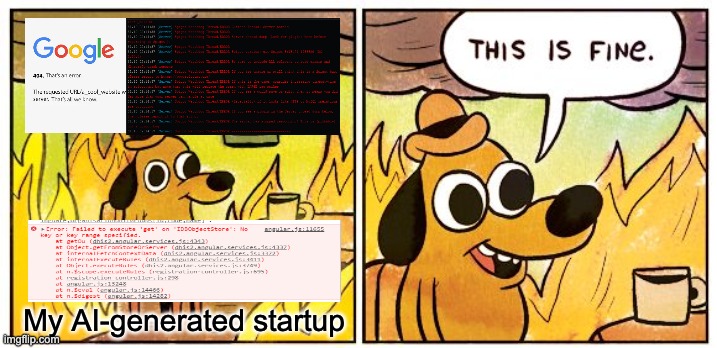Hyped.
If you've spent any time on social media lately, you've probably encountered the phenomenon known as "vibe coding."
Just go on X, type "vibe coding" in the search bar, and prepare to be inundated with a parade of AI-generated miracles:
- 3D games
- Sleek websites
- Clever tools
All supposedly created without writing a single line of code.
It's the tech world's newest party trick: prompt, generate, launch, profit.
A non-technical person asks Claude or GPT to build something, watches it materialize like digital magic, and then shares a 30-second clip that racks up millions of views. VCs lose their minds, tech influencers declare the death of traditional programming, and suddenly everyone's an app developer.
Meanwhile, roughly 80% of actual software engineers (just invented this stat) are watching this spectacle with a mix of fascination and concern.
They recognize something that isn't apparent in those viral clips: vibe coding isn't sustainable software development.
The Mirage of Instant Software
The allure of vibe coding is undeniable. Someone with zero programming knowledge can seemingly conjure functional software through conversation alone.
The demos look impressive:
- A fly game where you navigate through obstacles
- A personal finance tracker that visualizes spending
- A chatbot that speaks in Shakespearean English
In the confined space of a short demo video, these creations appear fully realized and production-ready.
The culture gap between AI enthusiasts and software engineers has grown so wide that projects like the viral Levesio fly game get serious attention at VC conferences (Global summit - Hello Tomorrow).

Is it impressive? Absolutely. The fact that we can generate working code through natural language is a genuine technological breakthrough.
But engineers who regularly work with AI tools understand something crucial: it's virtually impossible to maintain these projects or scale them beyond their initial demo state.
At a certain point in development, progress doesn't just slow down, it reverses.
The Logarithmic Reality
Non-technical observers often assume a linear progression:
"If AI can build this simple game today, imagine what it'll build six months from now!"
The reality is far more logarithmic. Initial progress is rapid and impressive, but diminishing returns set in quickly.
The 80/20 Problem
- The first 80% of a project might materialize in hours with AI assistance
- The interface looks good, basic functionality works
- You have something worth showing off
But the remaining 20% involves:
- Handling edge cases
- Optimizing performance
- Ensuring security
- Fixing bizarre bugs
This can take weeks of conventional engineering work, if it's possible at all.
We are very, very far from being able to build sustainable products using AI-only approaches.
These vibe coding demos are like sandcastles on the beach. They look impressive until the tide comes in. They weren't built to last.

The Bounded Problem Fallacy
Here's an illuminating example of AI's current limitations:
It's actually easier to create a simple fly game than to tell Cursor / Claude Code (AI coding assistant) to translate a real-world application from Python to JavaScript.
Why?
The game represents a bounded, relatively simple problem with clear visual feedback.
The translation requires understanding:
- Complex dependencies
- Architectural decisions
- Nuanced relationships between components
These are challenges that current AI simply can't reliably handle.
This highlights a critical distinction: vibe coding works best for self-contained projects with limited scope. The moment you need integration with external systems, scalability, or maintainability, the AI-only approach begins to falter.
The Coming Reality Check
If you're a non-developer captivated by vibe coding demonstrations, here's a challenge:
Try It Yourself
- Define a clear, specific idea for what you want to build
- Engage with Claude, GPT, or another AI assistant
- See how far you get
I can guarantee with near 100% certainty that you'll hit a wall at some point, whether it's:
- Implementing a critical feature
- Fixing a persistent bug
- Trying to deploy your creation to actual users
That moment of frustration is the reality check that the current AI hype cycle desperately needs.
The Vibe Coder Repair Industry
We're likely about to witness the emergence of a new niche in the software industry: high-priced consultants specializing in rescuing failed vibe coding projects.

The Scenario
Imagine this increasingly common situation:
- A startup founder uses AI to create an MVP
- They secure funding based on the demo
- They find themselves unable to move beyond that initial prototype
The first cases are already appearing. A recent post on Pivot-to-AI.com documents exactly this scenario.

While it might be tempting to laugh at someone else's technological misfortune, the story represents what many in the industry believe is coming: a wave of stranded projects built on shaky AI foundations.
Appreciate the Magic, Understand the Limits
None of this is meant to diminish AI's genuine achievements in code generation.
What tools like Claude and GPT can produce is legitimately impressive, especially compared to what was possible just a few years ago. The ability to translate natural language descriptions into functional code opens up exciting possibilities for:
- Prototyping
- Education
- Creative experimentation
The Key is Maintaining Perspective
-
Be amazed because it's genuinely impressive
-
Don't mistake it for magic
-
Don't make bold predictions about the future of software development based on something you have zero understanding of
Vibe coding represents an exciting new prototyping tool,not the end of software engineering as we know it.
The Bottom Line
The most successful organizations will be those that understand both the capabilities and limitations of AI code generation, using it as one tool in a comprehensive development strategy rather than a complete replacement for traditional engineering practices.
To be fair, AI coding tools are rapidly improving. Claude's recent advances in full codebase awareness represent genuine progress. The ability to understand and modify entire projects rather than just isolated code snippets is a meaningful step forward. These improvements suggest that some of today's limitations may be temporary.
But progress isn't the same as readiness. Even as AI tools become more sophisticated, the fundamental challenges of software engineering handling edge cases, ensuring security, maintaining scalability, and debugging complex interactions remain largely unsolved by prompt-based development.
In the meantime, if you're planning to build a business on vibe-coded foundations, you might want to keep a few professional developers on speed dial.
You're probably going to need them.

